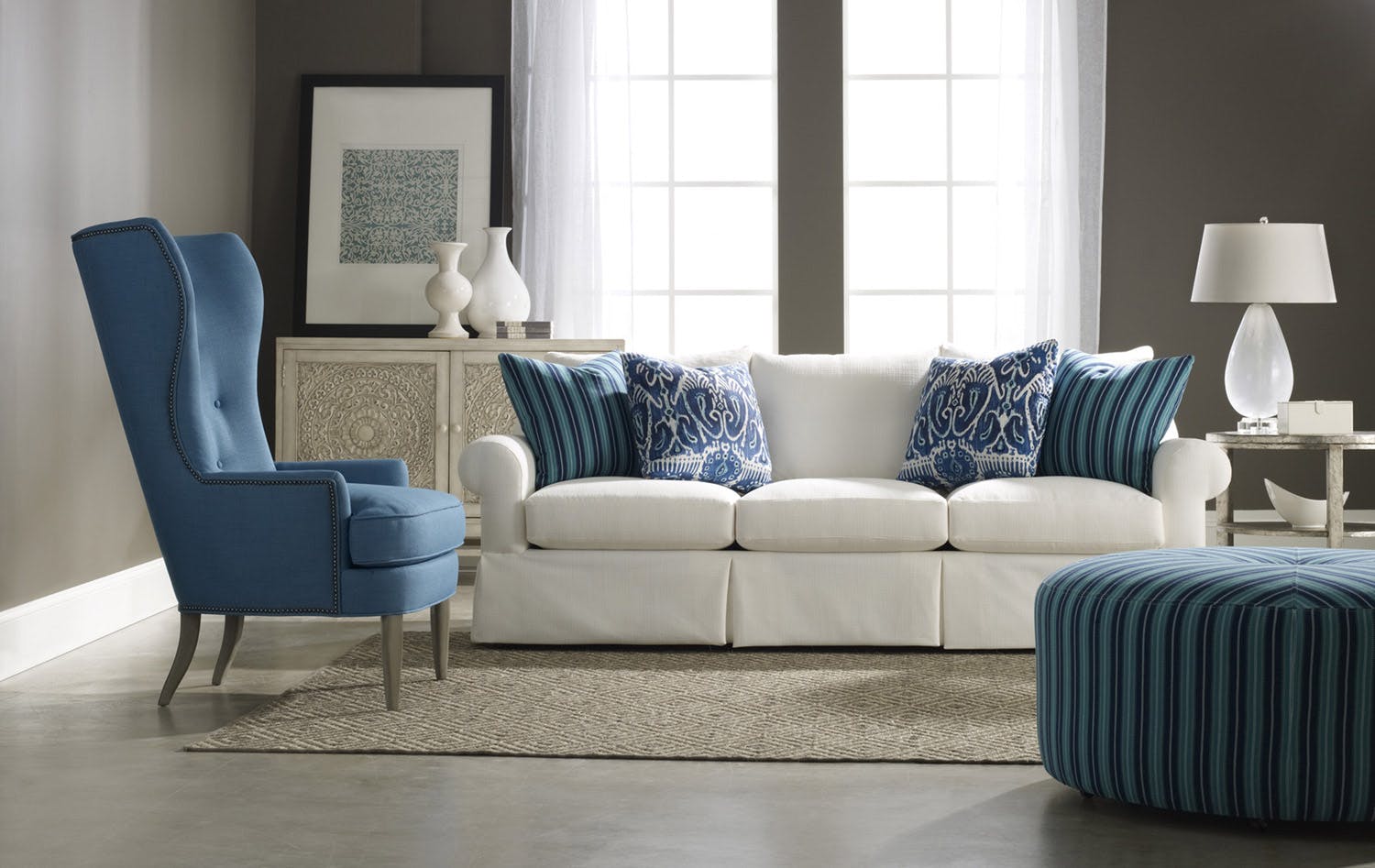Once you’ve done the heavy lifting of moving, it can feel just as overwhelming to figure out where to start when turning your new space into a home. But it doesn’t have to be so scary—moving into a new house or apartment can actually be a beautiful, exciting new chapter. By visualizing the atmosphere, you want in your new space, furnishing a new home can be a joyful experience.
But before you can dive right in, there’s some preliminary planning you may want to consider. One of the first steps should be to figure out how much you can afford and what you want to prioritize. This may take some trial and error—there’s no shame in starting a project and realizing it’s not what you want to spend your money and time on.
The key to finding the right furnishings is to follow your instincts and try not to let the whole process overwhelm you. Once you’ve given yourself a budget on furnishing and decorating, you’ll be able to dwell into the more fun aspects of creating a new home.
Here are a few tips for furnishing your new home.
1. Consolidate your belongings.
This might be the easiest part of it all, but surely a good opportunity to ask yourself and identify what you already own, and what you will need to purchase. This will help you to say goodbye to pieces that don’t suit your lifestyle anymore.
When consolidating, start by evaluating the following furniture—Beds, Sofa, dining table, and loose furniture. Review what you have. Did you recently purchase something that you would really like to keep? Decide what you are going to keep and what you would like to replace with something new.
2. Get familiar with the property
This might take some time to figure out what you can do and what you can’t do. Go for light wall colors and furniture if the property is small. Do not overcrowd the property with furniture as this should be a pleasant environment for you to relax. Ask questions to yourself and seek professional advice if you lack ideas. Do not try to fit in an island in your kitchen if you don’t have enough space, just keep everything simple and the most important thing PRACTICAL.
3. Start with the basic things
As a rule of thumb for interior decoration, it is best to start with the basics. Painting the walls is much easier to do before any furniture is brought into the house.
Prior to move-in day, make a list of any changes you would like to make to the existing interior. Here are some basics to consider:
Walls: Choosing a paint color, patching existing holes, choosing wall paper
Appliances: Selecting kitchen appliances, bringing in a washing machine and dryer, installing air-conditioning system, installing lighting fixtures.
Blinds: These might take around 6 weeks to be fitted from the order date. Choose the right blinds for your property, go for practicality and something which is easy to clean and maintain. Remember that what is in fashion today might not be the next year so try to avoid patterns and bright colors.
Tiling: Retiling the bathroom, choosing a backsplash, re-doing the kitchen counters
Once you’ve made the list of changes, determine what adjustments you would like to make immediately, and which ones could be set aside to tackle in the future. You might be able to live with the blue tiling in the kitchen, but maybe the pink walls in the bedroom might not be complimenting the furniture. Next determine what you can do yourself, and what will require professional attention. Try to schedule as much of the work prior to move-in day as possible.
4. When buying furniture, start with the most important rooms
Once the basic interior changes have been made, it’s time to start choosing furniture. Tackle the most important rooms first. Think Quality over quantity! The kitchen/ living/dining room and the bedroom are two places you are likely to spend the most time in, so these are good rooms to prioritize. (You don’t want to have a fully organized pantry before you have an acceptable place to sleep and you don’t need a spare bedroom unless you really need it.)
Consider the key pieces of furniture you will need in these rooms. The investment pieces—like the kitchen furniture, appliances, bed and a sofa are probably worth spending extra money on in order to get something that will not only last for many years, but that will tie the room together and complete the space.
Bedroom: For the bedroom, a good bed frame or a storage bed and mattress are essential, so these are probably your investment pieces. Some other key elements may be a good size wardrobe, chest of drawers, and nightstands. Choose a bedroom vibe before buying new pieces, so that you have a cohesive theme throughout the room.
Living room: In the living room, a sofa is the centerpiece, so that’s the investment piece (and a good decor starting point). Consider size, comfort, and color. Depending on your lifestyle, a big TV or entertainment center may also be part of the equation. Some other key elements may be an area rug, coffee table, and art for the walls. You may also want to consider pillows, throws, and bookshelves.
Kitchen furniture and countertops: This might be the most expensive area in your property. Try to choose something durable, hardwearing and practical, a good quality kitchen should last an average of 15 to 20 years. Make sure you have enough storage space in your kitchen. Countertop and back splash are also very important, go for something which it does not chip or stain easily.
5. Keep things organize while you unpack
Cabinets and closets are a good place to start when organizing. First, determine what you already have that can be functional—baskets, bins, free standing drawers, etc. As you unpack your belongings, utilize these tools to stay organized
6. See the big picture
Lay out all décor pieces you own, including art, books, family photographs, trays, candles, and vases. Ideally, you have already gone through most of this stuff in the initial consolidation phase, so that you’ve only kept things that are meaningful to you or fit your home’s decor.
Once you see everything in one place, start picking out things that go together. There are no wrong answers here—you might choose books that all relate to travel for your office, or a series of family heirlooms and photographs for your bedroom.
Once all your belongings are in place and paintings hung, you can make a list of what is missing in every room, browse online to find some great ideas and pieces that resonate with you and your space. These may seem like small additions, but they can make a huge difference.
Conclusion
What I highly recommend is to be creative, be different and be just you, this will be your home that will distinguish you from others. You must feel comfortable and relaxed in your own environment. Ask for opinions and advice but the final decision should be always yours. Do not rush into buying things and remember that Rome wasn’t built in a day! Good Luck!




